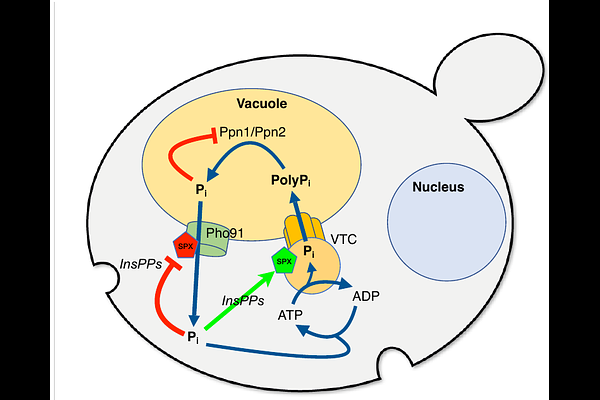Acidocalcisome-like vacuoles constitute a feedback-controlled phosphate buffering system for the cytosol

Acidocalcisome-like vacuoles constitute a feedback-controlled phosphate buffering system for the cytosol
Mayer, A.; Bru, S.; Michaillat Mayer, L.; Kim, G.-D.; Jessen, H.; Qiu, D.
AbstractCells experience strong variations in the consumption and availability of inorganic phosphate (Pi). Since Pi is an essential macronutrient but excess Pi has negative impacts on nucleotide hydrolysis and metabolism, its concentration must be maintained in a suitable range. Conserved storage organelles, acidocalcisomes, provide this buffering function. We used acidocalcisome-like yeast vacuoles to study how such organelles are set up to for this task. Our combined in vitro and in vivo analyses revealed that their ATP-driven polyphosphate polymerase VTC converts cytosolic Pi into inorganic polyphosphates (polyP), which it transfers into the vacuole lumen. Luminal polyphosphatases immediately hydrolyse this polyP to establish a growing reservoir of vacuolar Pi. Product inhibition by this Pi pool silences the polyphosphatases, caps Pi accumulation, and favours vacuolar polyP storage. Upon cytosolic Pi scarcity, the declining inositol pyrophosphate levels activate the vacuolar Pi exporter Pho91 to replenish cytosolic Pi. In this way, acidocalcisome-like vacuoles constitute a feedback-regulated buffering system for cytosolic Pi, which the cells can switch between Pi accumulation, Pi release, and high-capacity phosphate storage through polyP.